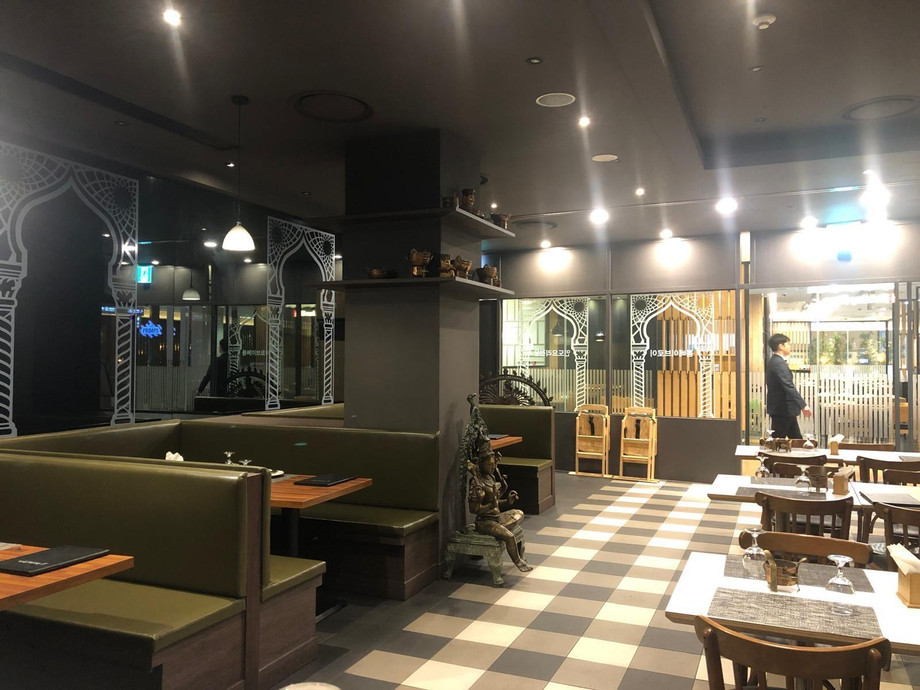Seoul, South Korea’s vibrant capital, is renowned for its rich culinary scene, offering a diverse range of international flavors that attract locals and visitors alike. For those seeking the rich spices and traditional flavors of India, Seoul has an array of Indian restaurants that bring the essence of Indian cuisine to life in South Korea. This article highlights some of the best Indian restaurants in Seoul, what to expect on the menu, and how these eateries blend authenticity with Seoul’s unique dining culture.
The Growing Popularity of Indian Cuisine in Seoul
In recent years, Indian food has gained popularity among Seoul’s adventurous diners. Indian cuisine offers a unique flavor profile, combining spices like cumin, coriander, turmeric, and chili that bring a burst of flavor and warmth to each dish. The increasing demand for diverse flavors has led to the opening of numerous Indian restaurants across the city, catering to both the local population and the Indian expatriate community.
From fine dining to casual eateries, these Indian restaurants allow food lovers in Seoul to experience everything from fragrant biryanis to creamy curries, creating an immersive culinary journey across India.
Authentic Indian Dishes to Try in Seoul
Indian restaurants in Seoul serve a variety of traditional dishes from different regions of India, providing a rich and diverse dining experience. Here are some popular Indian dishes you’re likely to find on menus in Seoul:
Butter Chicken: This creamy, tomato-based curry with tender chicken pieces is a crowd-pleaser, pairing well with naan or rice.
Palak Paneer: A vegetarian favorite, this dish features cubes of paneer (Indian cottage cheese) cooked in a creamy spinach gravy with spices.
Tandoori Dishes: Made in traditional clay ovens, tandoori dishes like chicken tikka, lamb kebabs, and tandoori naan offer a smoky flavor that’s hard to replicate.
Biryani: Fragrant basmati rice layered with spiced chicken, lamb, or vegetables and cooked to perfection, biryani is a must-try for rice lovers.
Samosas and Pakoras: These deep-fried snacks are popular appetizers, filled with spicy potatoes, peas, or lentils and served with tangy chutneys.
Masala Dosa: A South Indian specialty, this thin, crispy crepe made from rice and lentil batter is often filled with spiced potatoes and served with coconut chutney and sambar.
These dishes offer just a glimpse of the many flavors that Indian restaurants in Seoul bring to the table.
Top Indian Restaurants in Seoul
Here are some of the best-rated Indian restaurants in Seoul, each offering a unique dining experience:
Jyoti Indian Restaurant: Located in the heart of Seoul, Jyoti is popular for its wide range of North Indian dishes, including chicken tikka masala, lamb curry, and a variety of vegetarian options. The restaurant’s welcoming atmosphere and commitment to authentic flavors make it a favorite among locals and expats alike.
Indoro: Known for its cozy ambiance and high-quality ingredients, Indoro serves up both North and South Indian dishes. Their biryanis and masala dosas are particularly popular, and the restaurant’s interior captures a touch of India’s cultural richness.
The Everest: Nestled in the multicultural district of Itaewon, The Everest offers an extensive menu of Indian and Nepalese dishes. This restaurant is well-loved for its flavorful curries, naan bread, and aromatic chai tea, drawing a diverse crowd looking for a taste of India.
Namaste: With multiple locations in Seoul, Namaste is a trusted name for Indian cuisine in the city. They specialize in tandoori dishes and offer a variety of naan options to accompany their rich curries. The elegant decor and attentive service make it a great spot for family gatherings or date nights.
Ganga: A well-established Indian restaurant in Seoul, Ganga offers a sophisticated dining experience with a focus on North Indian dishes. With locations in upscale areas like Gangnam, Ganga serves butter chicken, kebabs, and paneer dishes with refined flavors and a modern presentation.
These restaurants bring a range of Indian regional flavors and styles to Seoul, providing diners with both casual and fine dining experiences.
The Fusion of Indian Flavors with Korean Ingredients
Some Indian restaurants in Seoul creatively incorporate local Korean ingredients or adjust the spice levels to cater to the local palate. For instance:
Korean-Indian Fusion: Certain dishes are adapted to combine familiar Korean ingredients like gochujang (Korean chili paste) with traditional Indian spices, resulting in unique fusion flavors.
Spice Level Customization: Many Indian restaurants in Seoul allow customers to choose their preferred spice level, ensuring that diners who are new to Indian cuisine can enjoy milder flavors, while spice lovers can still enjoy a kick.
Local Sourcing: Although many spices are imported from India, some ingredients such as vegetables and meats are sourced locally, providing freshness while maintaining authentic Indian flavors.
This fusion approach helps Indian cuisine become more accessible to a Korean audience while staying true to its roots.
Tips for Enjoying Indian Cuisine in Seoul
For those looking to fully enjoy their Indian dining experience in Seoul, here are a few tips:
Ask About Spice Levels: Indian food can range from mild to very spicy, so don’t hesitate to ask your server to adjust the spice level based on your preference.
Try a Variety of Dishes: Indian cuisine is incredibly diverse, so consider ordering a variety of dishes, including appetizers, curries, breads, and desserts, to get a fuller experience.
Pair with Traditional Indian Beverages: Many Indian restaurants in Seoul offer classic drinks like lassi (a yogurt-based drink) and masala chai (spiced tea), which complement spicy dishes well.
Enjoy Group Dining: Indian meals are often best enjoyed with others, allowing you to share different dishes and sample a variety of flavors.
By following these tips, diners can get the most out of their Indian food experience in Seoul and appreciate the flavors of one of the world’s most diverse cuisines.
for more info :-





Comments